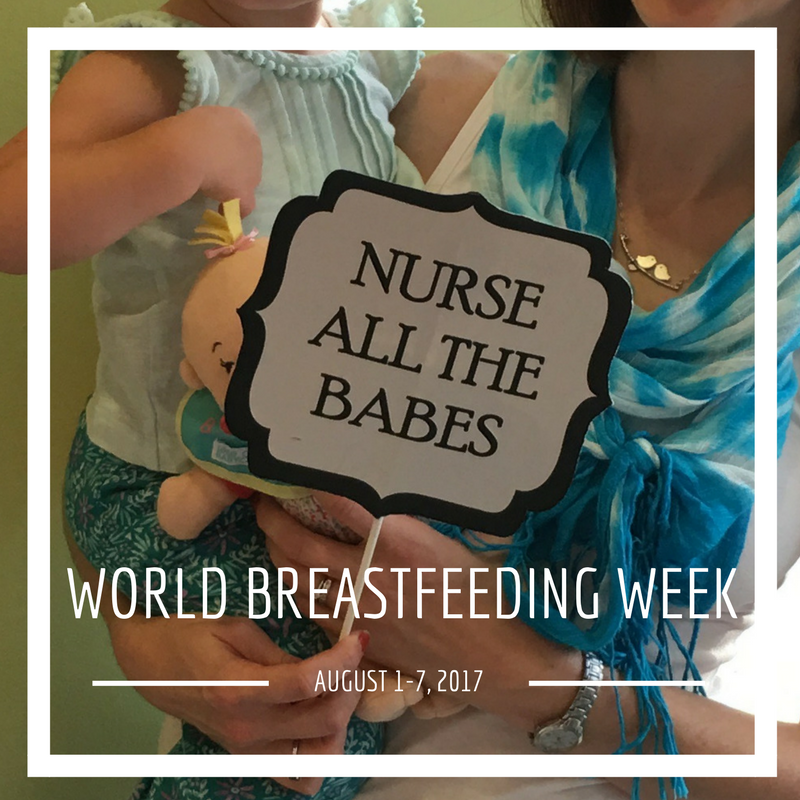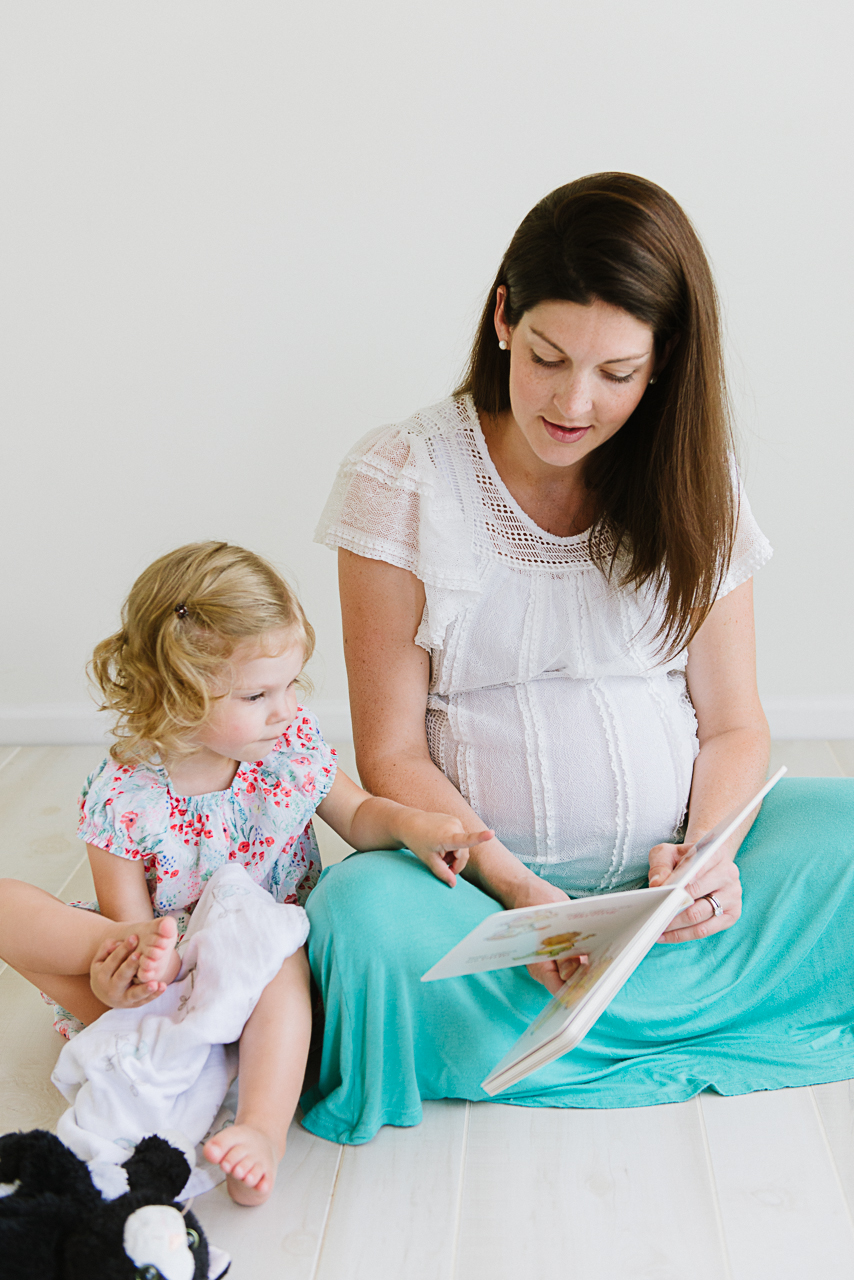As World Breastfeeding Week 2017 draws to a close, I want to continue telling Part 2 of my breastfeeding journey (click here for Part 1). It’s amazing how just the act of breastfeeding can vary so differently between two kids from the same mother. Personalities, latch, schedules, pattern of weight gain, sleeping habits, you name it. This was something I had heard, of course, but it wasn’t something I could really relate to until Nora was born!

Nora also latched right away after birth, and I had no pain! In stark contrast to my delivery with Claire, she was alert, and her birth was swift so she and I weren’t as fatigued. This was a relief, because I wasn’t sure I could manage the physical and emotional strain of another rough start with a toddler at home. I’m so thankful for how quick and easy her entire labor and delivery experience was, and that it culminated in a good start to breastfeeding. It made physical recovery and sleep MUCH easier from day 1.
Still, we weren’t out of the woods. Nora had a class 1 tongue tie and an upper lip tie. Thankfully, I knew more this time around. I was able to get it diagnosed and referred for revision within a few days. Her ties were clipped by an ENT at ten days old. Her tongue and upper lip were more restricted than Claire’s, but still she was able to transfer milk and gain weight initially due to a fast letdown (this is often called “riding the letdown,” and babies don’t have to suck as hard or as effectively because they let the milk pool up in their mouths and then swallow).
Because of the weak sucking muscles due to her tongue restriction, Nora clicked, gasped, and sputtered even after her ties were released. Like her sister, she was born with some torticollis because of her positioning in the uterus and birth canal. We opted for body work by an infant chiropractor who specializes in breastfeeding (something I’d heard could be beneficial when I was struggling with Claire’s latch). It helped strengthen her weak muscles, and the stretches helped straighten her positioning and side preference. It was like PT for a baby!
I was still nursing Claire, so my milk came in the second day after Nora was born. Nursing them together was an easy way to help the toddler bond with the newborn. By the time Nora was two weeks old, Claire was back to nursing only at nap and bedtime. In under a month, both girls had gained 2 lbs since Nora’s birth. It’s fun watching your newborn develop those chunky leg rolls, and seeing your petite toddler get suddenly taller and more chunky as well (there’s just something so sweet and delicious about baby rolls).
Still, oversupply blessed (or cursed) me again. While trying to wean the toddler, I had to pump to avoid clogs. I had mastitis before, and I was afraid of getting it again. However, I’ve been able to donate to an adoptive family, which is a blessing to me (and hopefully to them, too). Few people knew I was still nursing a toddler. I faced both opposition and support from those who did know. I want to make it clear that I never forced Claire. We believed after about the 6-month mark with Claire that we would allow her to wean naturally when she was ready. She often asked more than I obliged. It calmed her temper tantrums, it made her feel connected when I couldn’t give her 1-on-1 attention because her sister needed to be fed, and it helped with my discomfort and engorgement in the beginning. Because our nursing journey got off to such a rough start, I didn’t want to force her to wean. I cherished the bond I had with Claire, my rainbow baby, because I knew at some point nursing her would come to an end.
Nora’s skin is extremely sensitive. She suffered from a bad diaper rash after several brands of disposables, baby acne (which is normal but hers was still worse than Claire’s), and eczema. She even got a blistery/scaly rash from certain “sensitive” wipes! She barfed a ton and was congested from about 2 weeks old. Around 5 weeks postpartum, I decided to remove dairy from my diet. Eliminating food while I’m nursing is hard for me because I’m hungry ALL the time–but I’m willing to do anything for my babies’ comfort.
When the dairy-free diet made a difference in her skin but didn’t heal her eczema flares completely (and once I could rule out contact sensitivity to things like lotions/soaps/detergents/etc), I did an elimination diet and learned that eggs bothered her, too. Not just overt eggs, but baked-in eggs too. Since I have celiac disease I eat a gluten free diet, and conveniently many of my bread staples are not just gluten free but also dairy free, but finding staples that were gluten AND dairy AND egg free proved to be a new challenge altogether. I cheated on dairy once when Nora was about 2 months old, and she had bloody stools for several days. The dairy and egg free diet seemed to make her reflux less frequent, but definitely did not cure it.
By 3 months old, Nora’s weight gain was starting to slow down because of how much and how often she was spitting up from reflux. We took her back to the pediatrician and between her slow weight gain, high-volume emesis, grunting, “allergy” eyes/congestion, and arching, determined she would benefit from some reflux medication. It took about a week on infant Zantac twice a day before I saw a marked improvement. She still spit up often, but it was thicker so it didn’t seem like as much (and it definitely wasn’t as projectile). I also noticed her eyes and congestion drastically improved, as well as her demeanor and posturing. She’s always been chill, but I could tell she was much more physically comfortable.
As of the time of this original post, it has been 29 months since I first started breastfeeding. Since this is something I’m passionate about (and something I’ll be doing for the foreseeable future), you can expect to hear more about it! Like blogger Shannon said in her post that I quoted last week: “Breastfeeding my babies does not mean I look down on any other feeding method. Nursing does not have to be all or nothing. It is not the end-all-be-all.
And while breastfeeding may not be the right choice for every family, it IS right for me and mine.
AND THAT’S PERFECTLY OKAY. Breastfeeding is a part of who I am.”
How about you? What’s your breastfeeding story (or struggle)? Share in the comments!

